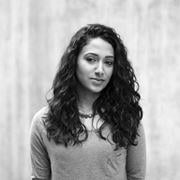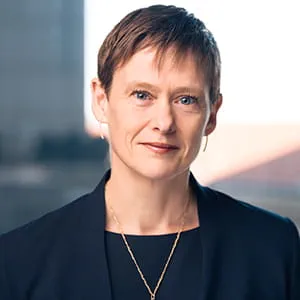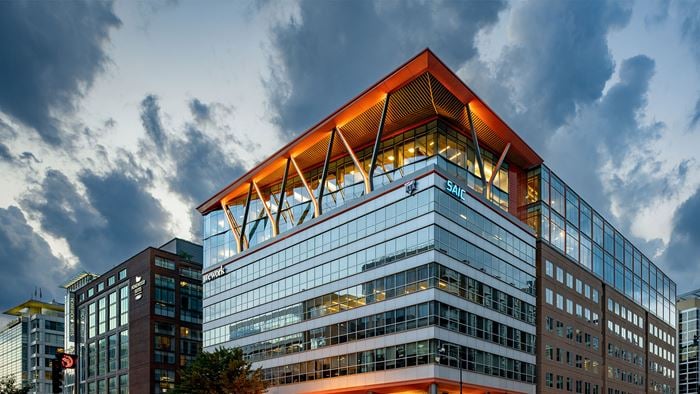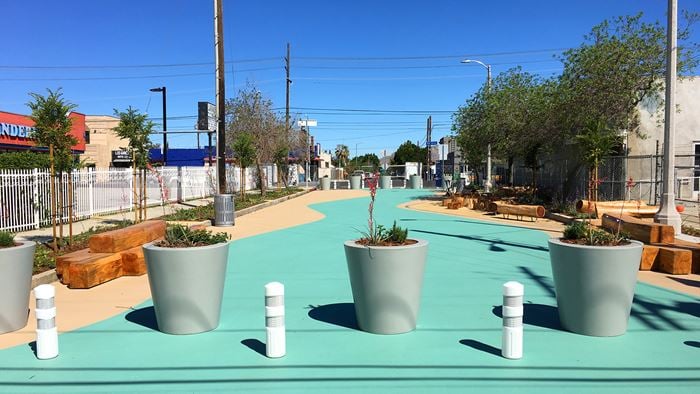The COP27 summit arrives as we navigate major shifts in the landscape of climate policy and action in the United States and beyond. Looking to the future, we’re calling on our colleagues and collaborators across the built environment to embrace our influential roles as designers and engineers in shaping a more equitable and resilient planet.
Arup’s Americas Chair Fiona Cousins, Americas Climate and Sustainability Services Leader Robert Kay, and Americas Resilience Discipline Leader Heather Rosenberg spoke with Radha Mistry, Americas Foresight Leader, to examine the current landscape of climate action, the once-in-a-generation opportunities that will shape the future of our cities and communities, and the work that lies ahead to create lasting change through human-centric approaches.
Radha: The consequences of the recent Supreme Court ruling regarding the EPA's ability to mandate carbon emission regulation is really a fragmentation of the policy structures and initiatives that can help us tackle the impacts of climate change at a systemic level. However, recent legislative developments such as the Inflation Reduction Act provide us with an unprecedented opportunity — as engineers, planners, and designers — to leverage our expertise by contributing to the action needed to address climate change.
With the understanding that federal action is an ongoing challenge, how can we act on the local level to make progress toward our climate mitigation goals?
Fiona: We’ve seen a handful of examples of climate action driven by states and cities. There are some obvious ones, like New York City’s Local Law 97, which addresses carbon emission reductions for large buildings. In this instance, the formation of the legal framework was undertaken with social impact in mind. This approach has become increasingly important to us in the last few years, as we need to be looking at climate change mitigation initiatives through the lens of social equity.
Heather: That is definitely true. Our clients are increasingly asking us how they can develop decarbonization ordinances that are equitable. That requires understanding what the impact will be for different sectors, especially communities that have been traditionally excluded. By championing a holistic approach to policy making, we are leveraging the best-in-class of what's happening around the world, ultimately helping influence policy as it is developed.
Radha: I’m glad you touched on that because some of the details of the Inflation Reduction Act incentivize more climate-conscious behaviors at the citizen level.
Fiona: You’re right, and as we’ve been reflecting on the recent Supreme Court ruling, it is clear that lasting regulation has often been driven by local jurisdictions. If you look at things from the local perspective, especially during the last few years, we've seen that effective mitigation efforts have been driven by social concerns. This shift is something we are now observing in the Inflation Reduction Act, which includes measures that improve equity.
Let's explore this a bit more. What will the infrastructure and built environment response need to be to provide scaffolding that encourages these new behaviors?
Heather: The keyword is scaffolding. We’re beginning to see major federal funding directed to these initiatives, but a lot of work is needed to guide resources to individual projects. We need a lot of different tools creating impact at different levels, including policy change at the state and local level for new construction and new mechanisms to support retrofits of existing buildings.
So how do we actually design programs that respond to what the needs are on the ground in a systemic way and move from policy to action? And how do we help our clients — cities, utilities, companies, and non-profits — actually develop the internal capacity to implement?
One of the things that is really rewarding about doing this kind of work at Arup is that we have people engaged in a variety of scales and with a range of expertise. With this scaffolding in place, we can now work to join the needed pieces together and realize a more equitable built environment.
Robert: We also need to leverage our projects as vehicles to communicate that a sustainable energy transition is not as scary as it may seem. We can use these examples to communicate that our objectives are attainable and reinforce all that we have to gain by scaling these practices to the whole-of-city scale.
Heather: As designers, we need to be able to quantify what that benefit is on a human-level and demonstrate the social return on investment. I think there's a tremendous amount of work we can do to bring big capital into small projects in ways that build a foundation and maximize overall benefits without perpetuating unintended consequences.
At Arup, we recognize the value of collaboration to enable real action. Who else needs to be at the table and how do we bring them in?
Robert: When working at the community level, you need to think intentionally about local actors. We need to constantly be thinking about who they are and how we amplify their voices about what they need. We need to be humble when entering those partnerships. I encourage having a very deep sense of humility about the fact that you cannot possibly know the community in the same way that community members and local organizations do. It is imperative to genuinely form locally-grounded partnerships that are based on respect and trust.
Bradley Plaza Green Alley (Credit to Trust for Public Land)
Robert: At Arup, we view ourselves as trusted partners, holding both a sense of our own expertise and a sense of ourselves and responsibility to the planet. To Heather's earlier point about scaffolding, we can think about how different scales of partnership influence different parts of this scaffold by finding ways to affect global change through local examples. A key example of this is our engineering and consulting work on Bradley Plaza Green Alley, where we worked with the City of LA Sanitation & Environment team, The Trust for Public Land, and Pacoima Beautiful to transform an underused space guided by community input.
Radha: When I consider this, I think of buildings as future artifacts and signals of how contexts may change over the next hundred years, and how this thing that we've created will help humanity or society adapt to changing needs by offering a template or actionable solution.
Fiona: It’s hard work to push the envelope of climate mitigation on every project, meaning that climate action doesn’t scale up quickly enough. And this raises the question, how do you leverage that change, through policy and incentive, to build momentum?
While there is a lot of space and value in realizing exemplar projects to shift the envelope of possibility, and we should continue to do this, it’s also important to use policy to “raise the floor” of acceptable performance if we are to get to scale.
Heather: Our work with the Natural Resources Defense Council right now is a good example. They came to us asking how an existing building decarbonization ordinance for Los Angeles would impact affordable housing. Answering this required more than energy modeling and cost estimating. We also needed to understand the state of affordable housing. We found that the community is in crisis, and the types of energy solutions we have seen in the past could make things worse —increasing costs and triggering displacement, or leaving whole communities out entirely, which perpetuates cycles of disinvestment.
Heather: To Rob’s earlier point about community, making this kind of sweeping change without consideration to its effects will push people out of their homes. Instead, if you can plan for that hardest case and put the resources and incentives in place to protect residents from unintended consequences, you can maintain the social value of these buildings and in turn support the surrounding community.
Fiona: I think there are a whole series of levers, including legislation, which often sets the floor, and rating systems, which set the aspiration. When working to apply decarbonization principles learned from big buildings to smaller buildings, how do you negotiate between the aspirations and the floor while bringing stakeholders and collaborators along with you?
Robert: I think our recent work on 80 M Street SE in Washington DC is an excellent example of this negotiation, where we were able to leverage our expertise in sustainable timber construction to influence sustainable policies that will enhance future building projects. By taking an integrated approach, we worked closely with the Washington DC code authority to demonstrate that our proposed solutions fulfilled fire and life safety code requirements. The project is now the first high-rise overbuild timber structure in Washington DC.
Radha: One of the things that I have been thinking about often is how we can fight for equity within and beyond an engineering and design lens.
What does a people-based approach look like?
Heather: From the start of every project, we should be asking questions around, who is the development for, what is the purpose of this building or this infrastructure, and who might be most impacted or displaced by this project?
Fiona: As Arup is employee-owned, we are all thoroughly vested in actioning our purpose and making sustainability happen. We are not beholden to anybody outside of the room — only to ourselves, our colleagues, and clients — for the decisions we make on a project.
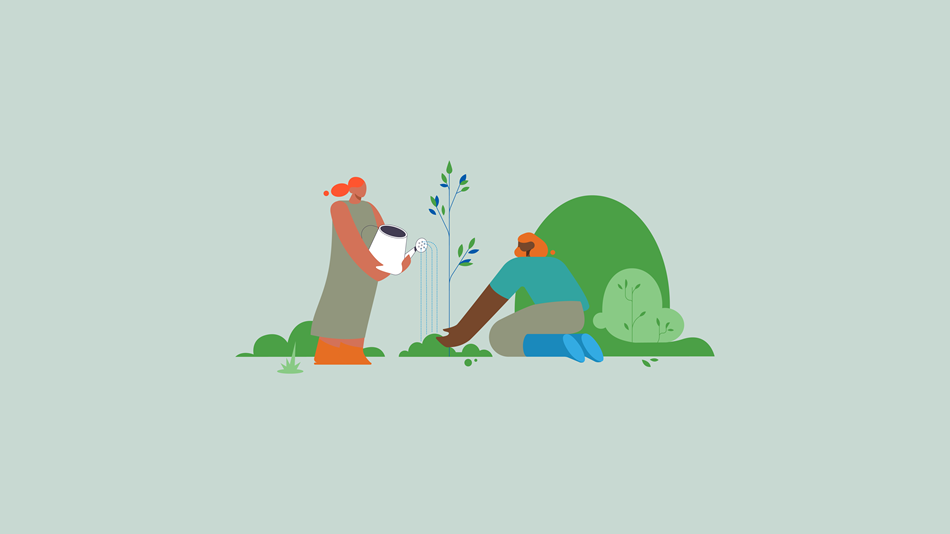
Radha: Younger generations are incredibly fluent in issues of climate change and planetary resilience. However, many feel that they don't have the agency to take action and are resigned to the future currently in motion.
As designers in positions of influence, how can we provide support and guidance to the younger generation to take part in this movement?
Fiona: We suggest to ourselves that if we were only able to get to a certain point, then we would gain the influence and power to make something big happen. However, no one goes it alone —we need everyone on this journey. I continually direct myself back to this quote:
“Never doubt that a small group of thoughtful, committed citizens can change the world. Indeed, it is the only thing that ever has. ” Margaret Mead
Fiona: There's also a huge issue of intergenerational inequity in regard to climate change. It wouldn’t be unreasonable for the younger generation to point at us and say, "Hey, you really screwed it up for us." This is one of the things we often hear from young climate action leaders like Greta Thunberg, because we really have put ourselves in a tough position by not acting earlier.
We need to find a pathway that uses the energy of younger generations to continually challenge the status quo and the understanding of older generations in how to work the system. Young people need to be empowered, but they cannot do it on their own. Working together is going make us better. By bringing everyone along, it may make us go a little slower, but there is a time and a place for going slowly and then acting fast as you reach the tipping point.
Heather: Go slow to go fast. What gives me the most hope — and is our best tool — is organizing as a community. We build partnerships and participate in coalitions. We need to be listening and learning, using our influence while engaging with stakeholders in different sectors and ask: What do you see? What are you learning? What works? How can we help? We need to see ourselves as part of a movement.
Robert: To Fiona’s point, there is the future that is chosen for you versus the future that you can choose. The activism and work that has been undertaken over the last 20 years is making a difference and demonstrating that the curve is beginning to bend, especially after dark days in the early 2010s where I was doing climate impact assessments and essentially realizing, "Because there is no serious commitment on climate action, this is going to be really, really bad...”
We can still chart a path for our future that is not predetermined. I believe that the last decades of climate activism have made a difference and will continue to as we realize tangible climate action.
Fiona has often shared that designers have the ability to save the world. From your perspective as designers, planners, and engineers, what is the single most important thing we need to do or focus on to be effective?
Fiona: As designers and engineers, the way that we can change the world is by looking broadly and actively avoiding single-track thinking. By creating momentary pauses, you can find the space where you determine what it is you are really trying to do, and then actually do it. It is in that moment of expansive reflection in which you can save civilization.
Heather: My focus is community organizing and systems-based approaches with the awareness that we can't achieve sustainability, resilience, or equity alone. We have to work to progress them all at the same time, or risk facing unintended consequences. To Fiona’s point, by taking a breath before you start your project, whatever it is, and ask: What does this mean? How is it connected to everything else? Why is it here? Who is it for? And how will it change the future? That's the moment.
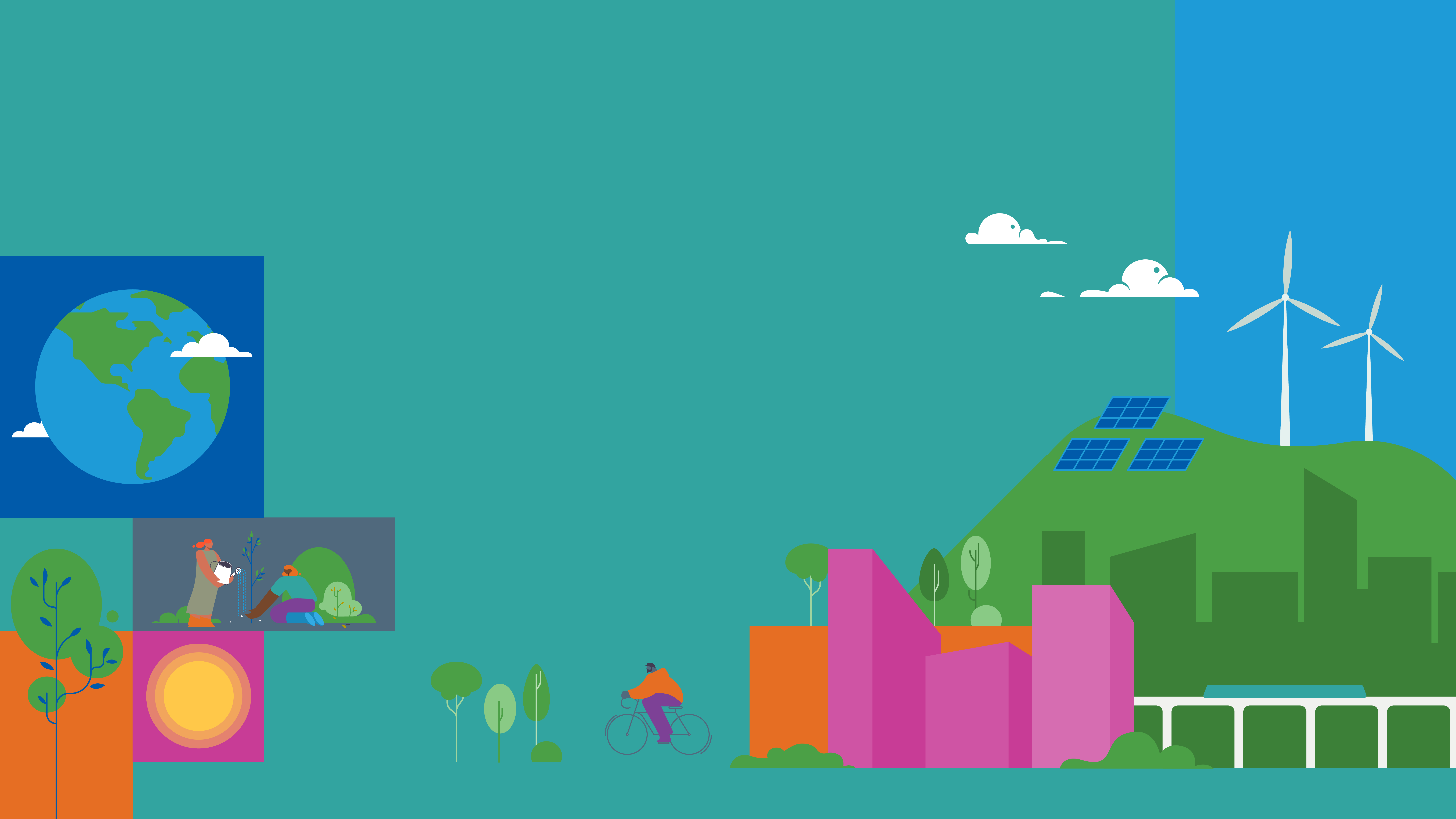 ;
;
